
Arizona Journal of Pharmacy O F F I C I A L P U B L I C A T I O N O F A R I Z O N A P H A R M A C Y A S S O C I A T I O N | F A L L 2 0 2 3 Put Some PrEP in Your Step Legislative Recap In This Edition: Kimberly Langley, PharmD, MBA, BCPS, FAzPA Happy American Pharmacists Month! AzPA President 2023-2024
BoardofDirectors2023-2024
OFFICERS
PresidentKimberlyLangley
President-ElectPro-TemporeJacobSchwarz
ImmediatePastPresidentDawnGerber
TreasurerRyanGries
SecretaryBrandyDeChellis

Director/CEOKellyFine
DIRECTORSATLARGE
CommunityBrianneSpaeth
HealthSystemMaryManning
TechnicianMelindaBrowning
JosephPellerito
JimmyStevens
ReasolChino
MistyBrannon
DanielleGilliam
LIASIONS
UniversityofArizona
StudentChapterDavidElias-Campa
Dean'sDesignatedRepresentativeNancyAlvarez
MidwesternUniversity
StudentChapterShamsRehman
Dean'sDesignatedRepresentativeMichaelDietrich
CreightonUniversity
StudentChapterHaleyDeMartinis
Dean'sDesignatedRepresentativeJaneStein
LegalCounsel
RogerMorris
AzPAStaff
ChiefExecutiveOfficer
KellyFine
Education&ProfessionalDevelopment
DawnGerber
Events&StrategicPartnerships
CindyEsquer
Membership&VolunteerServices
MarquesBottorf
StrategicPrograms
KristinCalabro
AdministrativeServices
MelinaEsquer
Editor KellyFine
CreativeCoordinator
ElizabethNelson
TheinteractivedigitalversionoftheArizonaJournalofPharmacyisavailableformembers onlyonlineinyourmemberportal
(480)838-3385|admin@azpharmacy.org
Editor'sNote:Anypersonalopinionsexpressedinthismagazinearenotnecessarilythose heldbytheArizonaPharmacyAssociation."ArizonaJournalofPharmacy"(ISSN1949-0941) ispublishedquarterlybytheArizonaPharmacyAssociationat:1845E.SouthernAvenue, Tempe,AZ85282-5831

President’s Message 4 Contents COVER STORY
pg. 4 AzPA News Welcome New Members 5 Editorial Happy American Pharmacists Month 6 Advocacy Legislative Update 29 Continuing Education Put Some PrEP in Your Step 13 Az-ASHP State Affiliate News 8 University & Alumni News 21 Arizona Board of Pharmacy Update 30 Preceptors Corner 10 Auditors Crack Down on Pharmacists that Bypass Plan Limits 27 AzPA License Bundles are Back 7 ASBP Sides with AzPA & Independent Pharmacy Coalition 32
U P C O M I N G E V E N T S
November 4 | Virtual
November 14-16 | Virtual
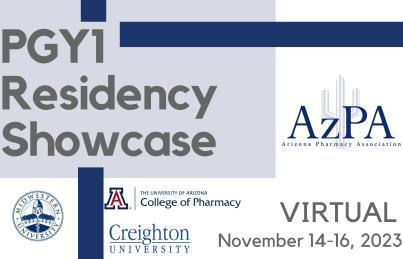

November 4 | Virtual
April 20-21 | Glendale


February 24-25 | Phoenix, AZ
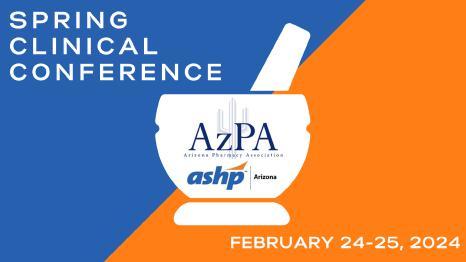


June 6-9 | Phoenix, AZ
June 6 | Phoenix, AZ
3
Kimberly “Kim” Langley, PharmD, MBA, BCPS, FAzPA is the Chief Financial O�cer for the DoD Federal Electronic Health Record Modernization o�ce responsible for implementing a single, common federal electronic health record system for Department of Defense, Department of Veteran A�airs, Department of Homeland Security, and the National Oceanic and Atmospheric Administration CDR Langley is a pharmacist in the U.S. Public Health Service (USPHS) Commissioned Corps and has been on continuous active duty since 2009 She has completed previous USPHS assignments at multiple duty stations across New Mexico and Arizona with Indian Health Service During this time, CDR Langley served in several diverse leadership positions including Pharmacy Manager, PGY-1 Residency Program Director, Cardiovascular Clinic Director, and IHS Agency- Representative to the Million Hearts Initiative. In 2015, CDR Langley served as the Chief Pharmacy O�cer for her team in Liberia as a part of the Ebola crisis response in West Africa
CDR Langley holds a Bachelor of Science in Medical Technology from Georgia Southern University; a Doctor of Pharmacy degree from Medical University of South Carolina; a Master of Business Administration from The Citadel; and completed a Certi�cate in Business Process Management from Villanova University She is also boardcerti�ed in Pharmacotherapy and served on multiple technical expert panels for Pharmacy Quality Alliance for the development of cardiovascular and diabetes quality measures

CDR Langley is actively engaged in AzPA activities including serving on the Board of Directors as President-Elect, Director-at-Large, APhA House of Delegates Representative, member on several committees, faculty for 2 certi�cate programs, abstract peer reviewer, and conference speaker Her leadership experience extends to various roles on multiple USPHS committees, workgroups, and mentoring programs.
Dear AzPA Members,
As the President of Arizona Pharmacy Association, I am deeply honored and grateful for this opportunity to serve in this esteemed position! I have had the opportunity to re�ect on changes in my professional life with stepping into this new leadership role as well as my personal life with becoming the parent of a �rst-year college student this fall What has stood out most during my thoughts on change is that change is inevitable However, with support and planning, these changes can be boldly faced together. Since taking o�ce in June at the Annual Convention, the Board of Directors has been working hard to develop and execute the 3-year strategic plan to lead change towards our mission of unifying, amplifying, and empowering the voice of pharmacy in Arizona. I am so proud of our AzPA leaders in their commitment to the profession and most importantly, our members!
While there is still so much more to be done, AzPA has had some positive changes to celebrate Our advocacy e�orts have resulted in Arizona pharmacists joining the growing number of pharmacists across the nation that are able to prescribe hormonal contraceptives. This has been an e�ort that has taken collaboration, persistence, and determination. We are grateful to the many advocates, champions, and partners that have helped us be successful in this area. We have also seen a big step forward on payment of pharmacy services. AzPA has been working with BlueCross/Blue Shield of Arizona for the past year and we are pleased to announce that Arizona pharmacists can be credentialed as providers for reimbursement of pharmacy services under this commercial plan More information will be forthcoming about this collaboration, but we are excited to leverage these �rst steps towards provider status and payment for services in our state
Despite these successes, we can’t stop there. Change is a certainty in the evolving landscape of pharmacy. In the words of Mahatma Gandhi, “you must be the change you want to see in the world”. Let us as members of AzPA be that change, together! The journey ahead may be challenging as we navigate and adapt to improve wellbeing and workplace conditions, promote sustainability in pharmacy business practice, address wage gaps and workplace shortages, increase medication access, and implement new technologies in pharmacy practice, but I am encouraged by the potential for us to lead that change together in Arizona Let’s blaze a trail to our future!
PRESIDENT'S
4
Kimberly “Kim” Langley, PharmD, MBA, BCPS, FAzPA 2023-2024 AzPA President
EDITORIAL
MESSAGE
WELCOME NEW MEMBERS!
2nd Year Practitioner
Mohanad Znbaqa
Pharmacist
Kathleen Brakebush
Olivia Brandner
Jacqueline Campbell
Chandima Deegala
Nate Evans
Derek Fomba
Shannon Gri�th
Dominick Grosso
Joseph Haimann
Jared Hatchard
Ashley Krumenacker
Maranda Lofton
Amy Nguyen
Tran Nguyen
Elisabeth Palmer
James Parrish
Samira Samarbakhsh
Laura Michelle Vaughn
Premium Pharmacist
Thuy Nguyen
Gregory Nipper
Kate Van Hassel
Retired
Christopher Hogan
Sherif McCormick
Eileen Webster
Technician
Geo�rey Boadu
Charles Case
Shauna Geis
Vanessa Gervais
Myra James
Ashley Merrick
Sharon Miller
Kadean Perrone
Annette Wright-Smith
Resident
Je�rey Bezard
Kathryn Bohannan
Monique Busacay
Lauren Campisi
Jonathan Choe
Lillianne Do
Edith Ford
Hannah Henderson
Alexandra Leath
Alexis Marsden
Amy Moet
Rima Patel
Christine Perry
Alexis Smith
Scott Volker
Fredi Young
Student Pharmacist
Lester Lee Acoba
Hasan Alaani
Ravaida Ali
Lien Alimam
Oday Aliadir
Randee Alkhayyat
Vanessa Arbolida
Gilberto Arroyo
Jessica Barnabei
Cecilia Bercovich
Jennifer Bloxham
Andrew Bobbitt
Faris Bodagh
Sarah Brewer
John Briggs
Brooke Chavez
Gabrielle Ciadella
Richard Conway
Kara D'Angina
Haylee Daniel
Jacqueline David
Haley DeMartinis
Etornam Doe
Hazel Eastlack
Mackenna Elliott
Sherif Elsayed
Tatyana Eydelnant
Logan Farrington
Carla Fernandez
Maxwell Finkler
Haily Francis
Lourdes George
Aaron Gilmore
Monique Guevara
Gianna Haddad
Elizabeth Marcia Halm
Sabrina Hernandez
Kristi Howard
Eric Jelen
Grace Khan
Nicole Leiphon
Riley Loehr
Viridianna Lopez
Marie Lopez-Carreon
John MacDonald
Caroline Manweiler
Angel Martinez
Brenda Mata
Mekayla Mehrara
Evelyn Montes
Sandra Moreno
Kyle Murphy
Anthony Musil
Kathy Ngo
ThyThy Nguyen
Adassa Nissan
Shahd Omer
Jose Oregel
Batuhan Ozdiker
Nicole Parnett
Jahnvi Patel
Rand Paul
Sandra Paul
Rozabel Peterson
Lisa Regalado
Trevor Riley
Mohamed Rizk
Jerdawn Robinson
Ryan Rodrigues
Adrian Rodriguez
Mark Rothpletz
Maria Sarwar
Madelyn Sawyer
Tyler Sedig
Praise Setodji
Ryan Shumway
Rajdeep Sidhu
Melissa Starks
Amy Tanase
Cody Tipp
Behnoush Tohidnia
Sahar Toluee Achacheluee
Esmeralda Torres
Perla Torres
Katherine Tran
Nick Tromba
Kevin Tsinigine
Crystal Vo
Traci Wynder
Ramez Youssef
Martha Zeng
AZPA NEWS
5
HISTORY OF AMERICAN PHARMACISTS MONTH
It all started in October 1925 For one week, radio stations across the country broadcasted special programming to highlight the profession of pharmacy.
In 2004, after celebrating National harmacy Week for nearly 8 decades, APhA ecognized October as American harmacist Month and has so ever since.
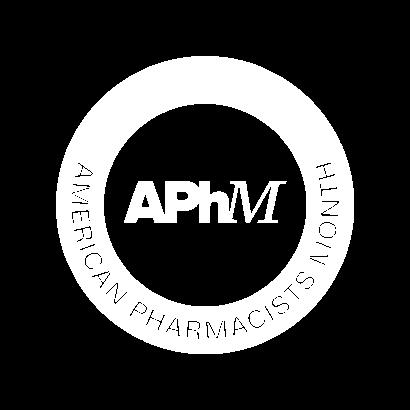
IMPORTANT DATES
•
October 1-31: American Pharmacists

Month
• October 15-21: National Pharmacy
•
HAPPY AMERICAN PHARMACISTS MONTH!
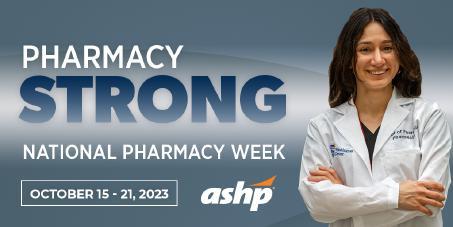

Happy American Pharmacists Month from AzPA -- a time to recognize pharmacists’ contributions to health care and all they can do for their communities!

Nominate Your Pharmacy Department! Calling All Pharmacy Professionals! Nominate your pharmacy or department today for an appreciation treat delivery by AzPA leaders during Pharmacy Month this October Let's celebrate your hard work and dedication! #AzPA #PharmacyMonth
Nominate Your Pharmacy!
October 12: Woman Pharmacist Day
Week
• October 17: Pharmacy Technician Day

Thursday, October 12
October 15 - October 21
Tuesday, October 17
PHARMACISTS MONTH
EDITORIAL
6
CELEBRATE WITH US! RSVP Here!
AZPA LICENSE RENEWAL BUNDLES ARE BACK!

Still need CE for your renewal? We've got you covered!
These License Renewal Bundles are a cost-e�ective way to get CE for your license renewal quickly -- see the topics below and click for more information!
TOPICS
Law = 2 25 hours
Immunization = 2 hours
Opioids = 3 hours
Patient Safety = 1 hour
Tobacco Cessation = 2 hours
Note: These CPE programs have been previously o�ered at AzPA Conferences -If you have already claimed credit for these CPE sessions already you will NOT be able to claim credit again

FEES
AzPA Member Technician - $79
Non-Member Technician - $99

AzPA Member Premium Pharmacist - $119
AzPA Member Pharmacist - $129
Non-Member Pharmacist - $199
EDITORIAL PHARMACISTS MONTH
Have Questions about Renewal Requirements? SkiptotheArizonaBoardofPharmacy Updatetolearnmore! GotoPage30 Learn More! 7
AzPA HEALTH SYSTEM SPECIAL INTEREST GROUP (AZ-ASHP)


I’d like to start o� with a quick thank you to Chris Edwards who led the AzPA Health System Special Interest Group (SIG) for the last two years! He has now turned over the reins to me and I am excited to work with you ALL With fall just around the corner and some cooler temps on the way, I hope you will be motivated to become a member of the Health System SIG. Our monthly meetings cover issues relevant to health system pharmacists in Arizona Recent topics have included barriers to dispensing naloxone from hospital emergency departments, infusion site of care strategies, drug shortages, as well as ASHP legislative updates. The more perspectives we have on this group, the more we can make sure AzPA is serving the needs of its health system members. If you are interested in getting involved, please sign up using the link below https://azpharmacy org/health-system-sig/
Additionally, even though spring seems to be aways o�, we will begin planning for the Spring Clinical Meeting very soon This meeting will be held on February 24 & 25, so mark your calendars now! AzPA’s Spring Clinical Conference serves as our ASHP state a�liate chapter’s annual meeting. At our monthly SIG meetings, we want to hear from you regarding topics that you �nd interesting and would like to learn more about
Respectfully,
 Mary Manning, PharmD, MBA, BCPS AzPABoardofDirectors-HealthSystem
Mary Manning, PharmD, MBA, BCPS AzPABoardofDirectors-HealthSystem
More Here AZ-ASHP AFFILIATE NEWS 8
Mary Manning, PharmD, MBA, BCPS AzPA Board of Directors-Health System
Learn

9
Tailoring Rotation Experiences for Unique
Learner Needs

AUTHORS/CONTRIBUTORS
LauraHanson,PharmD,BCGP,QualityAssuranceSiteVisitor,Department ofPharmacyPractice,MidwesternUniversityCollegeofPharmacy
SuzanneLarson,PharmD,DirectorofExperientialEducation,Departmentof PharmacyPractice,MidwesternUniversityCollegeofPharmacy
JanetCooley,PharmD,BCACPDirectorofExperientialEducation,Departmentof PharmacyPracticeandScience,R.KenCoitCollegeofPharmacy,UniversityofArizona
DISCLOSURE
Theauthor(s)declarenorealorpotentialconflictsorfinancialinterestinanyproduct orservicementionedinthemanuscript,includinggrants,equipment,medications, employment,gifts,andhonorarium.
FUNDING
Nofundingwasprovided.
ACKNOWLEDGEMENT
Theauthorgratefullyacknowledgesallpharmacypracticepreceptorsdedicatedto providinghighqualitylearningexperiences.
EDITORIAL PRECEPTOR CORNER 10
CONT. PRECEPTOR CORNER
Experiential rotations o�er learners many opportunities for professional and personal development Each learner is unique with varied interests and backgrounds and may bene�t from speci�c activities and experiences to gain full bene�t from a given rotation The purpose of this article is to assist preceptors in identifying opportunities to tailor rotation opportunities and activities for a learner’s speci�c needs In this article the term “learner” will be used to describe both resident and student pharmacists, and the principles discussed apply to both levels of learners
At �rst glance, some may believe that tailoring rotations is related to learning styles (e g auditory vs visual learners) and the concept of “meshing” or the aligning of one’s teaching methods to the learner’s preferred learning style The concept of meshing may be of bene�t, but literature is not yet conclusive about recommendations for employing meshing as an e�ective teaching strategy. The practice of tailoring, however, goes beyond the concept of meshing to incorporate learner professional and academic history, interest areas, professional experience, and future goals.
The concept of tailoring rotations and is encouraged by the Accreditation Committee for Pharmacy Education (ACPE) and American Society of Health System Pharmacists (ASHP). Per ACPE, preceptors are encouraged to assess “students’ prior knowledge and experience relative to the rotation’s objectives”. This allows the preceptor to tailor the rotation to maximize the student’s educational experience and ensure appropriate interaction with patients, their caregivers, and other health professionals, as applicable. Per ASHP, residency programs must work with residents to create a personalized development plan including “documented re�ection by the resident on career goals, practice interests, and well-being and resilience”. Based on this individualized re�ection, residency programs are expected to make “…[a]djustments …based on resident’s strengths and opportunities for improvement relative to the programs competency areas, practice interests, and career goals”.
How can I tailor a rotation to my individual learner’s needs? Get to know your learner
The �rst step in tailoring rotations e�ectively is to gain a deep knowledge of individual learners’ interests, background, past experiences, and goals, as well as learning what motivates and inspires the learner This information can be gathered in a variety of ways, including conversations, a learner introduction form, reviewing the learner’s CV, or scheduling an informal lunch
meeting. This knowledge forms a basis for subsequent customization planning. Having a standardized process in place to get to know learners early can ensure this important step is not missed or delayed
Identify modi�cations of core competencies
Once the individual characteristics and needs of the learner are clear, preceptors can then re�ect on how available opportunities at the site can be leveraged to best meet these needs and promote optimal learning and development A balance between core rotation requirements with an element of customization is encouraged so that all essential competencies, experiences, and activities are completed as required There are often many ways to approach completion of these requirements
If a learner has a strong interest in a particular disease state or patient population, preceptors can select patients from these subsets for students to follow (e g assigning patients receiving antibiotics for a learner interested in infectious disease)
Topic discussions and drug information projects can focus on areas of learner interest (e g a Medication Use Evaluation focused on cost for learners interested in pharmacoeconomics or a project focused on patient education pearls for learners interested in ambulatory care)
One commonly encountered challenge is a learner in the hospital/institutional setting who is intent on working in the community setting and has most of their professional experience in this space Initially, this learner may not perceive value in a standard acute care rotation; however, the preceptor can tailor the rotation experiences and activities to demonstrate the continuum of care and the pharmacist’s essential role in medication reconciliation and communication among care settings The core competencies of the acute care rotation can be met while still allowing the learner to �nd personal ful�llment and motivation through rotation tailoring. While this example is speci�c to one practice setting, the concept can be applied to almost any rotation setting.
Identify supplementary learning opportunities
Learners often engage in activities and experiences to supplement core rotation requirements. This can include committee participation, advocacy activities such as Pharmacy Day at the Capitol, and professional development activities such as association meetings and board/licensing exam preparation. There are many ways in which these supplementary activities can be targeted to address student interests and needs. Some
1 1 2 2 2
11
CONT.
PRECEPTOR CORNER
examples can include providing opportunities to shadow other healthcare professionals in practice areas of interest to the learner, facilitating connections and networking in the learner’s area of interest, and connecting learners with supplementary materials such as continuing education modules or journal articles relating to pertinent topics
Support your learner’s professional development needs Mentoring through direct discussion of the preceptor’s academic and career path and lessons learned is also invaluable to learners Practical logistical advice customized to the learner’s immediate career goals can consist of curriculum vitae/resume review, practice interview questions speci�c to desired practice setting, and facilitating introductions to practitioners currently working in the space Additional discussion about assisting learners with professional development is found in a previous issue of the Arizona Journal of Pharmacy
There are many ways to approach rotation tailoring and speci�c approaches will vary widely depending on unique characteristics of preceptors, sites, and learners. A deep understanding of your learners’ motivations, goals, and background as well as opportunities within your practice site serves as the cornerstone of the process. Once this is achieved, modi�cations within core rotation requirements that maintain the integrity of the requirements may be
implemented The area with the most potential for customization is supplemental activities where creative approaches with learner input can lead to unique and highly bene�cial opportunities In addition to addressing essential requirements from accrediting bodies, practicing rotation customization allows for re�ection and self-awareness on the part of learners
Preceptors and sites also bene�t from the increased ful�llment and satisfaction that comes from getting to know their learners and being part of their journey

REFERENCES
1 Romanelli F, Bird E, Ryan M (2009) Learning styles: a review of theory, application, and best practices. AmericanJournalofPharmaceuticalEducation ;73(1):9
2 Accreditation Council for Pharmacy Education (ACPE) Accreditation Standards and Key Elements for the Professional Program in Pharmacy Leading to The Doctor of Pharmacy Degree (“Standards 2016”) https://www acpe-accredit org/pdf/Standards2016FINAL pdf Accessed Sept 11 2023
3 American Society of Health System Pharmacists (ASHP) ASHP Accreditation Standard For Postgraduate Pharmacy Residency Programs https://www ashp org/-/media/assets/professionaldevelopment/residencies/docs/examples/ASHP-Accreditation-Standard-forPostgraduate-Residency-Programs-e�ective-July-2023 pdf Accessed Sept 11 2023.
4. Larson S, Cooley J, Gri�n BL. Preceptor pearl: Your students want more professional development. Arizona Journal of Pharmacy. 2022 (Fall edition) 810 https://thinkgraphtech com/digital media/Arizona Pharm/Fall2022/ Accessed Sept 11 2023
4
12
Put Some PrEP in Your Step
AUTHORS/CONTRIBUTORS
ConnieLiang,PharmD,UniversityofMarylandSchoolofPharmacy
NehaPandit,PharmD,BCPS,AAHIVP,UniversityofMarylandBaltimoreSchoolofPharmacy
FUNDING - Thisresearchwasnotfunded
DISCLOSURES - Theauthorshavenorelevantfinancialrelationshiptodisclose
CONTINUING EDUCATION INFORMATION
Target Audience: Pharmacists, Pharmacy Technicians
Activity Type: Knowledge
Pharmacist Learning Objectives:
1 Compare the different Human Immunodeficiency Virus (HIV) preexposure prophylaxis (PrEP) medications.
2 Identify individuals who are good candidates for HIV PrEP initiation.
3 Provide counseling for individuals who are starting or continuing HIV PrEP
4 Identify the role of pharmacists in HIV PrEP initiation.
Pharmacy Technician Learning Objectives:
1 Identify the HIV PrEP medications that are currently available

2 Identify individuals who are good candidates for PrEP initiation.
Note: The continuing education article was originally published in the Maryland Pharmacists Association's MarylandPharmacist'sSpring 2023 issue
CONTINUING
13
Background
In the early 1980s, the �rst cases of acquired immunode�ciency syndrome (AIDS) surfaced in the United States and quickly marked the start of the AIDS epidemic with cases surging to 100,000 within seven years Shortly after, the �rst antiretroviral (ARV) medication was approved, and the subsequent use of highly active ARV led to a signi�cant decline in AIDS-related deaths As clinical trials were being conducted on other ARVs for HIV treatment, studies were being done on the use of certain ARVs for prevention of HIV infection. Around 2010, the results of the iPrEx study and the TDF2 study showed that emtricitabine (FTC)/tenofovir disoproxil fumarate (TDF) greatly reduced the risk of acquiring human immunode�ciency virus (HIV) for men who have sex with men (MSM) and individuals who have heterosexual sex
This led to the 2012 FDA approval of FTC/TDF (Truvada®) for pre-exposure prophylaxis (PrEP) in individuals who are at high risk for HIV transmission. Currently, there are three forms of PrEP that are available in the United States including FTC/TDF and FTC/tenofovir alafenamide (TAF) (Descovy®) which are oral medications and cabotegravir (CAB) (Apretude®) which is a long-acting injectable medication
Evidence Supporting the Use of HIV PrEP
FTC/TDF and FTC/TAF combinations di�er based on their tenofovir component. All three medications, TDF, TAF, and FTC are nucleoside/nucleotide reverse transcriptase inhibitors (NRTIs) and work by inhibiting viral replication through inhibition of the reverse transcriptase enzyme.
See Table 1 for the results of the PrEP trials
The Preexposure Prophylaxis Initiative (iPrEx) trial was a randomized, controlled trial that compared daily administration of oral FTC/TDF to placebo for PrEP in HIVnegative MSM or transgender women who have sex with men. The study found the FTC/TDF group had lower incidence of HIV acquisition compared to placebo. They also assessed adherence by monitoring pill counts. Of those that were found to be less than 50% adherent, FTC/TDF plasma drug concentrations were not detected in 86% and 100% of participants who were HIV-positive and HIV-negative, respectfully These results emphasize the importance of adherence in the e�ectiveness of oral PrEP. The Partners Preexposure Prophylaxis study was a randomized, double-blind trial comparing oral TDF and FTC/TDF for PrEP in East African heterosexual men and women and found that both TDF and FTC/TDF resulted in a signi�cant lower risk of HIV-1 infection
Following the approval of FTC/TDF, the next oral PrEP medication that was approved by the FDA was FTC/TAF TAF is a prodrug of TDF and has been shown to achieve a
higher intracellular concentration of the active drug compared to TDF. Based on these pharmacokinetic �ndings, TAF 25 mg once daily is bioequivalent to TDF 300 mg once daily The DISCOVER trial was a randomized, double-blinded, noninferiority trial to assess the safety and e�cacy of FTC/TDF compared to FTC/TAF in MSM and transgender women who have sex with men FTC/TAF was found to be noninferior to FTC/TDF in preventing HIV-1 infection. Both drugs were well tolerated with similar adverse e�ects. However, the FTC/TAF was found to have less bone mineral density loss and less renal function decline compared to FTC/TDF. Since the population included in this study only included MSM and transgender women who have sex with men, it remains unclear if the results of this trial can be extrapolated to other populations including heterosexual individuals
Although once daily dosing is most commonly seen for FTC/TDF, a non-daily “on-demand” or “2-1-1” regimen has been studied in clinical trials which consists of taking two pills 2 to 24 hours before sex, then 1 pill 24 hours and 48 hours after the two-pill dose. This has not been FDAapproved and the purpose of this dosing schema was to provide an alternative for MSM who have infrequent sex and may not require daily doses of FTC/TDF The trials on non-daily dosing of PrEP have con�icting results but is an available option based on the studies that demonstrated e�cacy.
CAB is the only long-acting injectable HIV PrEP which was FDA approved in 2021. It is a second-generation integrase strand transfer inhibitor which works by inhibition of the integrase enzyme preventing viral DNA integration into the human host cell The approval of this medication was based on two landmark trials, HPTN 083 and HPTN 084 The HPTN 083 study was a randomized, double-blinded trial to assess the safety and e�cacy of long-acting cabotegravir injections (CAB-LA) in comparison to oral FTC/TDF in cisgender MSM and transgender women who have sex with men. Participants in the CAB-LA group received oral lead-in therapy with cabotegravir 30 mg for 5 weeks followed by CAB-LA 600 mg intramuscular injection on week 5, week 9, and every 8 weeks thereafter CAB-LA was found to be superior to daily oral FTC/TDF for HIV prevention There were no marked di�erences in the frequency of grade two or higher adverse events between the groups including decreased creatinine clearance, increased creatine kinase, and nasopharyngitis. One signi�cant di�erence between the groups is that more participants in the CAB-LA group experienced injection site reactions (ISR), 81 4%, compared to the participants in the FTC/TDF group who received placebo injections, 31 3% However, only 2 4% of the participants in the CAB-LA
continued on next page
1 2 1 3 2 4
CONT. CONTINUING EDUCATION
5 6 7, 8 9 14
group discontinued the injection due to the ISRs. The HPTN 084 trial was a randomized, double-blind superiority trial to evaluate the safety and e�cacy of CAB-LA in comparison to oral FTC/TDF to prevent HIV in cisgender women and found that CAB-LA was superior to FTC/TDF for HIV prevention in women The most notable di�erence in adverse e�ects was ISRs in 38% of participants in CABLA group compared to 10 8% in the FTC/TDF group However, none of the participants discontinued the study due to the ISRs. This study showed that CAB-LA was e�ective and safe for HIV prevention in women. These two trials showed that CAB-LA was e�ective and safe for the prevention of HIV-1 infection in cisgender MSM, transgender women who have sex with men, and cisgender women
The HIV PrEP Guideline recommends the assessment and initiation of HIV PrEP in patients who inject drugs (PWID) based on limited studies that show bene�ts of HIV PrEP in PWID and that this population may also engage in high risk sexual behavior, consistent with the populations included in the studies discussed.
Eligibility
Adults and adolescents who weigh at least 35 kg are candidates for HIV PrEP if they are sexually active or inject drugs High risk individuals including those who had anal or vaginal sex in the past 6 months and either had a bacterial sexually transmitted infection (STI) in the past month, had inconsistent or no use of condoms, and/or have a sexual partner who is HIV-positive or has unknown HIV status may require more counseling. Individuals who have any of these risk factors should be o�ered HIV PrEP. Individuals who do not have these risk factors may still be initiated on HIV PrEP after shared decision-making with a health care professional and weighing the risk versus bene�ts
Oral HIV PrEP
FTC/TDF and FTC/TAF are supplied as a combination tablet and are indicated for patients who weigh at least 35 kg and are at-risk for sexually acquired HIV. Manufacturer labeling for FTC/TAF speci�cally excludes patients who are at risk from receptive vaginal sex as this population was not evaluated in the clinical trials. For HIV PrEP, both FTC/TDF 200/300 mg and FTC/TAF 200/25 mg are given once daily by mouth without regards to food
13 13, 14
10 11
CONT. CONTINUING
12
EDUCATION
12
Study Drug/Dosing Population Sample Size Median Follow up Time Period Outcomes iPrEx study3 Placebo FTC/TDF 200/300 mg MSM Transgender women who have sex with men 2499 participants 1 2 years Hazard ratio 0.56 (95% CI, 0.37 to 0.85) The PrEP study5 Placebo TDF 300 mg FTC/TDF 200/300 mg East African heterosexual men and women 4747 HIVserodiscordant couples 23 months Lower risk of HIV infection: TDF: 67% (95% CI, 44 to 81) FTC/TDF: 75% (95% CI, 55 to 87) DISCOVER8 FTC/TAF 200/25 mg FTC/TDF 200/300 mg MSM Transgender women who have sex with men 5387 participants 86 weeks Incidence rate ratio 0 47 (95% CI, 0.19 to 1.15) between FTC/TAF and FTC/TDF HPTN 08310 CAB-LA 600 mg IM FTC/TDF 200/300 mg MSM Transgender women who have sex with men 4566 participants 1.4 years Incident of HIV infection: CAB-LA: 0 41% FTC/TDF: 1.22% Hazard ratio of 0 34 (95% CI, 0 18 – 0 62) HPTN 08411 CAB-LA 600 mg IM FTC/TDF 200/300 mg Women who have vaginal intercourse 3224 participants 1.24 years Incident of HIV infection: CAB-LA: 0 20% FTC/TDF: 1.85% Hazard ratio of 0 12 (95% CI, 0 05 – 0 31)
15
Table 1. PrEP Studies
CONT.
CONTINUING EDUCATION
For both medications, it is imperative to con�rm that patients are HIV-negative with an HIV antigen/antibody (Ag/Ab) test and with no symptoms of acute HIV infection within one week of the �rst PrEP prescription Subsequently, patients must provide con�rmatory HIV-negative tests (HIV Ag/Ab, HIV RNA) at least every three months or every time the patient tests positive for an STI while taking this medication because of the potential risk of resistance in patients who have undetected HIV infection Those who are found to be HIV-positive should be transitioned to a full HIV treatment regimen because FTC/TDF and FTC/TAF alone are inadequate for patients living with HIV Prior to starting oral HIV PrEP, patients should be tested and assessed for hepatitis B infection (HBV) as both medications have HBV activity and may cause exacerbation if discontinued abruptly.
scheduled injection date which allows for a 14-day window to receive the dose. An HIV Ag/Ab test along with an HIV-1 RNA assay should be done at every scheduled injection appointment to con�rm the patient is HIV-negative and does not have acute HIV Since CAB-LA is long-acting, when discontinuing the injection, the drug levels in the body gradually decline which increases the risk for developing resistance if patient acquires an HIV infection during this time
Prior to and during treatment with both medications, renal function should be monitored, and adjustments made based on the ARVs. Use is not recommended in patients with an estimated creatine clearance (CrCl) of less than 30 mL/min for FTC/TAF and 60 mL/min for FTC/TDF For patients who are over 50 years old or have a CrCl that is less than 90 mL/min at HIV PrEP initiation, the renal function should be evaluated every six months. For all other patients on HIV PrEP, the renal function should be evaluated at least once a year Patients should be counseled on adherence and methods of protection to reduce the risk of transmission of other STIs (i e , condoms) Guidelines on further evaluation of STI screening and laboratory assessments while on PrEP are clearly noted in the HIV PrEP guideline
Injectable HIV PrEP
13, 14 12
Since adherence is crucial for e�cacy and prevention of resistance, it is important to ensure patients are ideal candidates CAB-LA use Some adverse e�ects that can occur include ISRs, diarrhea, headache, fatigue, nausea, and abdominal pain See Table 2 for HIV PrEP dosing and toxicity. Since ISRs are the most common adverse reaction for patients using CAB-LA, it’s important to understand how to manage these reactions Patients may use over the counter pain medications either before or after the injection as needed for pain associated with the injection To alleviate the pain, warm compress can be applied to the injection site for 15 to 20 minutes after the injection.
Pharmacy-Initiated PrEP
CAB-LA is supplied as a 600 mg/3 mL suspension that is administered through gluteal intramuscular injection by a healthcare personnel It is only indicated in adults and adolescents who are at risk for HIV and weigh at least 35 kg Similar to oral PrEP initiation, individuals must be screened for HIV infection and must have a negative HIV Ag/Ab test within 1 week prior to initiation because starting CAB-LA as an HIV-positive patient can breed resistance. Prior to starting the CAB-LA injections, patients have an option to either start with oral lead-in with oral cabotegravir 30 mg dailyfor at least 28 days or start directly with the injections. The purpose of oral lead-in (OLI) therapy is to assess tolerability of CAB-LA prior to starting the long-acting injections. The elimination half-life of cabotegravir injection is 5 6 to 11 5 weeks which is much longer than that of oral cabotegravir (41 hours) If patients opt for OLI, the injection should be administered either on the last day or within three days of the last oral lead-in dose. Oral cabotegravir is not available in pharmacies in the United States and can be attained through TheraCom Pharmacy with no cost to the patients CAB-LA injections are given 4 weeks apart for the �rst two injections followed by injections every 8 weeks thereafter Patients may receive their injection one week prior or one week after their
15, 16
There are regions in the United States and globally where individuals face multiple barriers to adequate PrEP including �nancial di�culties, lack of health literacy, costs of medications, lack of access to medical services and healthcare providers To address these barriers, pharmacist-initiated PrEP was introduced. Across the country, many pharmacists are initiating and managing patients on PrEP through collaborative practice agreements (CPAs) to improve access Factors to consider when navigating pharmacist-initiated PrEP include laws that clearly state the PrEP-related services pharmacists can provide that insurances should cover, providing additional trainings for pharmacists on PrEP, and deciding on the duration of time pharmacists can prescribe PrEP for a patient before referring them to a provider In 2021, a bill was introduced in Maryland that would allow pharmacists to dispense up to a 60-day supply of PrEP if a patient has proof of their negative HIV status and would be able to order con�rmatory tests for patients Although the bill was not passed similar bills may be introduced in future legislative sessions. Maryland pharmacists currently cannot initiate HIV PrEP in the community pharmacy, but pharmacists practicing in this setting are often reviewing and dispensing HIV PrEP medications It is important for pharmacists to be prepared to answer questions and counsel patients on dosing, side e�ects, and the importance of adherence. Community pharmacists are also able to identify patients who are eligible for HIV PrEP, provide education, and refer to appropriate healthcare providers for further assessment and initiation of therapy
12 15 12 17
continued on next page
12 12
16
Counseling Points
A multifaceted approach should be taken when deciding on which HIV PrEP to initiate for a patient. A thorough medication reconciliation should be completed to identify any drug interactions (See Table 3 for HIV PrEP Drug Interactions). Another factor to consider includes cost. See Table 4 for costs of the HIV PrEP medications Since FTC/TDF is the only product that has a generic formulation available, some insurances may prefer the generic product over brand products. It is also important to consider what population the patient most identi�es with For example, if a heterosexual female who has receptive vaginal sex is looking for PrEP, FTC/TAF should not be recommended as it was not studied in this population See Table 5 for HIV PrEP coverage resources Another variable that may impact the choice of PrEP formulation is adherence. Oral PrEP’s e�cacy is dependent on a patient’s ability to take their medication daily If they are nonadherent and are amenable to staying adherent to clinic visits, CAB may be a good alternative given its long-acting pharmacokinetics and once every 8week dosing frequency Taking into consideration patientspeci�c factors is also crucial For example, depending on
the patient’s CrCl, the appropriate PrEP options can change as someone who has a CrCl that is less than 60 mL/min would not be able to use FTC/TDF. Similarly, if a patient already has declining bone mineral density, then starting them on FTC/TDF may exacerbate this e�ect and FTC/TAF would be a safer alternative.
Conclusion
In conclusion, there are currently three medications that are FDA-approved for PrEP on the market including FTC/TDF, FTC/TAF, and CAB, all of which have shown to be e�cacious with good tolerability. The decision on which agent to start for PrEP is dependent on patient-speci�c factors including medical conditions, cost, and adherence This also involves shared decision-making regarding the risks and bene�ts of preventative treatment. Currently, there are numerous ongoing trials on HIV PrEP options including other ARV medications and formulations 18
Optional oral lead-in: CAB 30 mg tablet by mouth daily for at least 28 days
CAB Injection: Inject 600 mg into gluteal muscle 4 weeks apart for 2 consecutive doses, then administer 600 mg every 8 weeks
CONT. CONTINUING EDUCATION continued on next page
PrEP Dosage Toxicity Truvada® (FTC 200 mg/TDF 300 mg) 1 tablet by mouth once daily Immune reconstitution syndrome • Lactic acidosis/hepatomegaly • Decreased bone mineral density • Renal injury • Gastrointestinal (i.e., abdominal pain, diarrhea, nausea) • Descovy® (FTC 200 mg/TAF 25 mg) 1 tablet by mouth once daily Apretude® (CAB-LA 600 mg/3 mL)
Injection site reactions • Depressive disorders • Hepatotoxicity • Headache • Fatigue • Nausea • Diarrhea • Abdominal pain •
17
Table 2. PrEP Dosing and Toxicity13, 14, 15
CONT.
CONTINUING EDUCATION
PrEP
Concomitant Medication
Recommendation
Cidofovir Closely monitor renal function
Adefovir Do not coadminister.
Truvada® (FTC 200 mg/TDF 300 mg)
Ganciclovir/valganciclovir Monitor for dose-related toxicities.
Ledipasvir/Sofosbuvir
Do not coadminister
Sofosbuvir/Velpatasvir +/- voxilaprevir Monitor for TDF-related adverse events
Rifabutin
Rifampin
Rifapentine
Adefovir
Do not coadminister unless bene�ts outweigh risks
Do not coadminister.
Descovy® (FTC 200 mg/TAF 25 mg)
Ganciclovir/Valganciclovir Monitor for dose-related toxicities.
Carbamazepine/Oxcarbamazepine
Phenobarbital
Phenytoin
Do not coadminister
St. John’s Wort Do not coadminister.
Rifampin
Rifapentine
Apretude® (CAB-LA 600 mg/3 mL)
Carbamazepine/Oxcarbazepine
Phenobarbital
Phenytoin
Vocabria® (CAB oral 30 mg)
Contraindicated
Contraindicated.
St. John’s Wort Do not coadminister.
*Same drug interactions as CAB-LA with the following addition
Aluminum, Magnesium +/- Calciumcontaining Antacids
Administer antacid products at least 2 hours before or 4 hours after taking CAB PO
PrEP Average Wholesale Price Generic TDF/FTC $3920.37/56 days supply Truvada® (TDF/FTC) $4126 71/56 days supply Apretude® (CAB-LA) $4506 60/56 days supply Descovy® (TAF/FTC) $4566.99/56 days supply
Table 3. HIV PrEP Medications Drug Interactions19
18
Table 4. Cost of PrEP20, 21, 22
1 Ready, Set, PrEP: https://readysetprep hiv gov/
4
12 Preexposure prophylaxis for the prevention of HIV infection in the United States – 2021 update CDC 2021 Accessed on January 10, 2023 https://www cdc gov/hiv/pdf/risk/prep/cdc-hiv-prep-guidelines-2021 pdf
13 Descovy (emtricitabine/tenofovir alafenamide) [package insert] Foster City, CA; Gilead Sciences, Inc; Revised 01/2023
14 Truvada (emtricitabine/tenofovir disoproxil fumarate) [package insert] Foster City, CA; Gilead Sciences, Inc; Revised 06/2020
15 Apretude (cabotegravir) [package insert] Research Triangle Park, NC; ViiVHealthcare Revised 12/2021
16 Vocabria (cabotegravir) [package insert] Research Triangle Park, NC; ViiVHealthcare. Revised 1/2021.
2 Gilead’s Advancing Access Program: https://www gileadadvancingaccess com/
3 ViiVConnect: https://www viivconnect com/
References
1 HIV Historical Timeline U S President’s Emergency Plan for AIDS Relief
Accessed January 10, 2023 https://hivhistory org/panels/panel-07/
2 Grant RM, Lama JR, Anderson PL, et al Preexposure chemoprophylaxis for HIV prevention in men who have sex with men N Engl J Med 2010;363(27):2587-2599 doi:10 1056/NEJMoa1011205
3 Holec AD, Mandal S, Prathipati PK, Destache CJ Nucleotide Reverse Transcriptase Inhibitors: A Thorough Review, Present Status and Future Perspective as HIV Therapeutics Curr HIV Res 2017;15(6):411-421 doi:10 2174/1570162X15666171120110145
4 Baeten JM, Donnell D, Ndase P, et al Antiretroviral prophylaxis for HIV prevention in heterosexual men and women N Engl J Med 2012;367(5):399410 doi:10 1056/NEJMoa1108524
5 Hill A, Hughes SL, Gotham D, Pozniak AL Tenofovir alafenamide versus tenofovir disoproxil fumarate: is there a true di�erence in e�cacy and safety? J Virus Erad 2018;4(2):72-79
6 Mayer KH, Molina JM, Thompson MA, et al Emtricitabine and tenofovir alafenamide vs emtricitabine and tenofovir disoproxil fumarate for HIV preexposure prophylaxis (DISCOVER): primary results from a randomised, double-blind, multicentre, active-controlled, phase 3, non-inferiority trial Lancet 2020;396(10246):239-254 doi: 10 1016/S0140-6736(20)31065-5
7. Molina JM, Capitant C, Spire B, et al. On-Demand Preexposure Prophylaxis in Men at High Risk for HIV-1 Infection N Engl J Med 2015;373(23):22372246 doi:10 1056/NEJMoa1506273
8 Molina JM, Charreau I, Spire B, et al E�cacy, safety, and e�ect on sexual behaviour of on-demand pre-exposure prophylaxis for HIV in men who have sex with men: an observational cohort study Lancet HIV 2017;4(9):e402-e410 doi:10 1016/S2352-3018(17)30089-9
9 Dow DE, Bartlett JA Dolutegravir, the Second-Generation of Integrase Strand Transfer Inhibitors (INSTIs) for the Treatment of HIV Infect Dis Ther 2014;3(2):83-102 doi:10 1007/s40121-014-0029-7
10 Landovitz RJ, Donnell D, Clement ME, et al Cabotegravir for HIV Prevention in Cisgender Men and Transgender Women N Engl J Med 2021;385(7):595608 doi:10 1056/NEJMoa2101016
11 Delany-Moretlwe S, Hughes JP, Bock P, et al Cabotegravir for the prevention of HIV-1 in women: results from HPTN 084, a phase 3, randomised clinical trial Lancet 2022;399(10337):1779-1789 doi:10 1016/S0140-6736(22)005384
12 Preexposure prophylaxis for the prevention of HIV infection in the United States – 2021 update CDC 2021 Accessed on January 10, 2023
https://www cdc gov/hiv/pdf/risk/prep/cdc-hiv-prep-guidelines-2021 pdf
13 Descovy (emtricitabine/tenofovir alafenamide) [package insert] Foster City, CA; Gilead Sciences, Inc; Revised 01/2023
14 Truvada (emtricitabine/tenofovir disoproxil fumarate) [package insert] Foster City, CA; Gilead Sciences, Inc; Revised 06/2020
15 Apretude (cabotegravir) [package insert] Research Triangle Park, NC; ViiVHealthcare. Revised 12/2021.
16 Vocabria (cabotegravir) [package insert] Research Triangle Park, NC; ViiVHealthcare Revised 1/2021
17 Pharmacist-initiated PrEP and PEP NASTAD Accessed on January 10, 2023
https://nastad org/sites/default/�les/2021-11/PDF-Pharmacist-InitiatedPrEP-PEP pdf
18 PrEP Ongoing Trials AVAC (Global Advocacy for HIV Prevention) Accessed on January 10, 2023 https://www avac org/trialsearch?
�eld prevention option tid%5B%5D=4&keys=&title=&�eld status value=All &�eld phase value=All
19 Guidelines for the Use of Antiretroviral Agents in Adults and Adolescents with HIV Department of Health And Human Services 2023 Accessed on March 31, 2023 https://clinicalinfo hiv gov/en/guidelines/hiv-clinicalguidelines-adult-and-adolescent-arv/whats-new
20 Active Ingredient: Emtricitabine/tenofovir disoproxil fumarate
17 Pharmacist-initiated PrEP and PEP NASTAD Accessed on January 10, 2023 https://nastad org/sites/default/�les/2021-11/PDF-Pharmacist-InitiatedPrEP-PEP pdf
18 PrEP Ongoing Trials AVAC (Global Advocacy for HIV Prevention) Accessed on January 10, 2023 https://www avac org/trialsearch?
�eld prevention option tid%5B%5D=4&keys=&title=&�eld status value=All &�eld phase value=All
19 Guidelines for the Use of Antiretroviral Agents in Adults and Adolescents with HIV Department of Health And Human Services 2023 Accessed on March 31, 2023 https://clinicalinfo hiv gov/en/guidelines/hiv-clinicalguidelines-adult-and-adolescent-arv/whats-new
20 Active Ingredient: Emtricitabine/tenofovir disoproxil fumarate RED BOOK Online IBM Micromedex [database online] Truven Health Analytics/IBM Watson Health; 2020. Accessed January 23, 2023.
https://www micromedexsolutions com
21 Active Ingredient: Emtricitabine/tenofovir aladenamide RED BOOK Online IBM Micromedex [database online] Truven Health Analytics/IBM Watson Health; 2020 Accessed January 23, 2023
https://www micromedexsolutions com
22 Active Ingredient: Cabotegravir RED BOOK Online IBM Micromedex [database online]. Truven Health Analytics/IBM Watson Health; 2020 Accessed January 23, 2023 https://www micromedexsolutions com
23 Ready, set, PREP: Find out if you qualify for enroll for free PrEP medications
Department of health and human services Accessed on January 10, 2023
https://readysetprep hiv gov/
24 Gilead’s Advancing Access Program Gilead Accessed on January 10, 2023 https://www gileadadvancingaccess com/
25. ViiVConnect. Accessed on January 10, 2023. https://www.viivconnect.com/
Active Learning Patient Case
GC is a 48-year-old-female who presents to clinic for HIV preexposure prophylaxis (PrEP) initiation. She states that she has receptive vaginal sex with her male partner and uses condoms around 30% of the time She is unaware of her male partners HIV status She has heard about PrEP from her friends and is interested in starting on medication She has no preference on route of administration. She has insurance through her job.
Pertinent objective data from 5 days ago
Weight: 48 kg
CrCl: 29 mL/min
HBV Surface Ab: positive
HBV Surface Ag: negative
HBV Core Ab: negative
HIV Ag/Ab: negative
HIV RNA: < 20 copies/ml
HCV Ab: positive
1 All of the following are reasons for why GC is a good candidate for HIV PrEP initiation except:
a. Has receptive vaginal sex.
b. Does not always use condoms.
c Does not know the HIV status of her sexual partner
d Has HCV antibodies
2 Which medication would be the most appropriate to initiate for GC?
a. Emtricitabine/tenofovir alafenamide
b Emtricitabine/tenofovir disoproxil fumarate
c Cabotegravir intramuscular injection
d Cabotegravir/rilpivirine
Answers on next page
RED BOOK
CONT.
CONTINUING EDUCATION
19
Table 5. PrEP Coverage Resources23, 24, 25
CONT. CONTINUING EDUCATION
Active Learning Patient Case Explained Answers
1 Answer D
Individuals who are sexually active (i.e., anal or vaginal sex) and/or inject drugs are good candidates for HIV PrEP For individuals who either do not or inconsistently use condoms are at a higher of acquiring HIV infection and would also be good candidates for HIV PrEP. When the HIV status of the sexual partner is unknown, it puts the individual at risk because if the sexual partner is HIV-positive, then the individual has an extremely high risk of also acquiring HIV-infection. Having HCV antibodies does not make an individual a good candidate for HIV PrEP initiation because none of the medications used for HIV PrEP has activity against hepatitis C and patients with or without hepatitis C can be on HIV PrEP.

2 Answer C
Emtricitabine/tenofovir alafenamide is incorrect because it has not been studied in heterosexual women who have sex with men It is also not recommended because her CrCl is less than 30 mL/min. Emtricitabine/tenofovir disoproxil fumarate is incorrect because use is not recommended in patients with CrCl less than 60 mL/min Cabotegravir intramuscular injection is correct because there is no renal dose adjustment. Cabotegravir/rilpivirine is incorrect because that is used for HIV-positive patients and is not an approved HIV PrEP
CONTINUING EDUCATION INFORMATION
AzPA Members may retrieve FREE CE for this article up to one year after the program release date This program provides 1.0 contact hours of continuing education credit.

Accredited Date: 05/30/2023
Expiration Date: 05/30/2026
Universal Activity Number (UAN) is: 278-0000-23-018-H02-P/T
Apply for credit here: https://www lecturepanda.com/r/PutSomePrEPinYourStepMPhA
20
The Virginia Pharmacy Association is accredited by the Accreditation Council for Pharmacy Education as providers of continuing education.
Rick G Schnellmann, PhD Dean, University of Arizona College of Pharmacy

Alumna Nicole Henry empowering health care from two directions
A passion for health care began early for Nicole Henry, PharmD, an assistant professor of practice at the University of Arizona R Ken Coit College of Pharmacy That passion was moved to reality though when tragedy showed her where she could help her community the most.


A career in health care always seemed to be in her future. In high school, she delivered meals to a senior center and volunteered in a hospice program, where she came to know many of the medications the patients were taking She had the opportunity to attend a pharmacy conference and became even more fascinated by how the interplay of di�erent drugs could produce di�erent results, and how those results could di�er from one person to another
Ultimately, however, it was that tragic event that solidi�ed her choice of career As an undergraduate bioscience major at Arizona State University, a family friend she’d been helping care for su�ered a brain hemorrhage and fall due to a severe interaction between two medications. That friend passed away as a result, and for Henry, his death made clear her way forward: she would pursue pharmacology with a goal of providing medication counseling and education as a pharmacist.
Patient-centered care
After graduating from ASU, she hit the ground running. In 2013 - her �rst year as a student at the Coit College of Pharmacy - Henry noticed the college didn’t have a student chapter of the American Society of Consultant Pharmacists, so she took the initiative to start one The group organized on-site consultation sessions with interdisciplinary teams drawn from the four UArizona Health Sciences colleges in Tucson, helping older adults better understand their medications and communicate with their doctors.
Those early experiences made her realize she could have the greatest impact on the health care system by working for change from two directions – �rst as a district leader for CVS Health where she is responsible for oversight, hiring, onboarding and talent development and second in teaching the Introduction to Pharmacy Practice course at the College of Pharmacy in Phoenix.
In addition to teaching, she delivers guest lectures in management courses, sharing her expertise and insights as a working pharmacist and industry leader It’s not a common combination: Of the more than 40,000 physicians, pharmacists, nurses and nurse practitioners that CVS Health employs, Henry alone melds those two worlds
The perspective from front-line pharmacy has shaped Henry’s teaching to focus on patient-centered care. For example, working with older adults, she has frequently encountered polypharmacy, in which patients are prescribed multiple medications to treat a single condition, such as high cholesterol, high blood pressure or various heart problems As a professor, she emphasizes the importance of simplifying medication regimens by reducing duplication and exploring combination therapies.
COVID-19 also brought important lessons that inform her teaching During the pandemic, she helped organize rapid mobilizations of pharmacists, but also witnessed widespread resistance to, and confusion around, vaccines The experience made her a staunch advocate for improving patient communication and messaging, as well as for everyday issues such as dosing intervals and adherence to a prescribed regimen
From her days as a graduate student to today as an assistant professor of practice at the R Ken Coit College of Pharmacy, Nicole Henry, PharmD, has stepped up when her community needed her Whether it was launching a student chapter of the American Society of Consultant Pharmacists or working to ensure her students had awareness of polypharmacy, in which patients are prescribed multiple medications to treat a single condition, Henry �nds a way to make an impact
EDITORIAL UNIVERSITY & ALUMNI
continued on next page 21
CONT.
UNIVERSITY & ALUMNI
“It’s really about how you communicate with patients to make sure that they understand where you're coming from,” Henry said. “Are we thinking through how patients are going to perceive messaging? Are we creating simplicity so they can truly understand us? I want my students to look at health care through the lens of both the patient side and the business side, because all of it needs to come together for care to be successful ”
“Top of license” pharmacy
Henry argues that pharmacists should be recognized as health care providers at the federal level Today, each state determines the professional activities allowed for licensed pharmacists, but provider status is a federal legal designation that would dramatically change the national calculus of health care delivery and economics
For example, pharmacists cannot be reimbursed under Medicare Part B for providing health care services to patients Nearly every other category of licensed care providers – including audiologists, social workers and dieticians – receive these reimbursements.
Champions for federally recognized provider status cite research demonstrating that when pharmacists have greater roles in health care, not only does the overall cost of care decrease, patients have better outcomes and express higher satisfaction.
In health care, this idea of optimizing capacity is captured in the phrase “working at top of license,” the concept that employees at any level should spend their time on tasks that require the full extent of what they know, not doing what could be done by someone who doesn’t have their education and training Straddling teaching and industry, Henry sees the issue as a pervasive disservice to communities, as well as to the pharmacists who serve them “Most are doing just a very small portion of what they went to school for,” she said. “They've been trained to do more. They want to do more. When pharmacists can work at the top of their license, people can come to them for basic health needs, and we can help them solve those issues very quickly.”
Expanded roles for pharmacists could also solve problems for the nation’s increasing strain on a toosmall workforce of physicians The Association of American Medical Colleges estimates that the U.S. could face a shortage of more than 120,000 physicians by the end of this decade When the UArizona Coit College of Pharmacy and College of Nursing recently joined forces to o�er a dual-degree program combining the PharmD with advanced nursing degrees, it was partly to help address this looming crisis
Henry points out that pharmacists are today’s most accessible health care practitioners A recent peerreviewed academic study found that roughly 89% of the U.S. population lives within �ve miles of a community pharmacy, and roughly 97% live within 10 miles of one Given their extensive training and education, expanding pharmacists’ role in health care delivery could dramatically increase access to routine care “That ease of care and accessibility – I think that's where pharmacists provide the most value," Henry said
Coming full circle
Today, Henry’s work has come full circle, even as it continues to break new ground Where she was once the student organizing consultation clinics at assisted living homes (and throwing them sock-hop fundraisers), she now mentors a new generation of learners into the community to set up clinics and volunteer at health fairs, where they provide free diabetes assessments, cholesterol checks, HIV/AIDS screening, depression awareness education and other services
Nothing in a classroom replaces the practical education that arises in those unscripted, hands-on, real-world settings: critical thinking and problem-solving, but just as importantly learning to listen, relate and build connections. For Henry, it always comes back to patient-centered care: giving people the knowledge and tools to be the agents of their own well-being
There is no greater feeling, she said, than when hearing someone from a clinic tell her, as one recently did: For the �rst time ever, I feel empowered to ask my doctor questions I feel empowered because of the work that you and your students have done with me
"I’m excited about the future of pharmacy,” Henry said. “We can really make a di�erence for our patients through interventions that are just very, very simple, but �rst we need to build trust with every patient. They need to know we’re there to provide education to them in a way they can understand and that our job is to make sure that they're safe and healthy and protected.”
22
Midwestern University College of Pharmacy
Mitchell R. Emerson, PhD Dean, Midwestern University College of Pharmacy
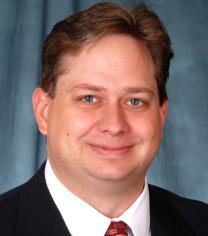
Greetings from the College of Pharmacy at Midwestern University!
As we welcome fall, we also celebrate the many accomplishments of our students, faculty, and alumni. In June, we welcomed our newest class and wished them success as they took their next steps to becoming an exceptional pharmacist The Class of 2026 is comprised of students from all over the nation, with 46% from Arizona and 14% from California.

These students have a variety of backgrounds, talents, and passions that make the College of Pharmacy a uniquely diverse and enriching place to be!

On September 13 at 5:00pm, we’ll be hosting the College of Pharmacy Alumni/First Year Students Ice Cream social on campus in Cholla Hall Thank you to our incredible alumni for sharing their stories and o�ering our newest students mentoring

On Sunday, December 3, we’ll be hosting the College of Pharmacy Alumni and Friends reception in Anaheim in conjunction with the American Society of Health System Pharmacists (ASHP) conference If you’re able to join us, please reach out to Kimberly at KHastings@midwestern.edu and look for details in your email.
Did you know we have a Midwestern University Job Board? If you’re looking to hire or looking for a new opportunity, please click here for more information https://www.midwestern.edu/alumni/alumni-job-�nder. We are looking forward to catching up with all of you and connecting at a future event If you’re ever back in the Glendale area, please reach out and stop by the campus. So much has changed, but still remains the same welcoming place.
If you’ve recently moved or relocated, please ensure we have your updated contact information. Please email updates to your Manager of Alumni Relations, Kimberly Hastings at KHastings@midwestern edu
To follow us and learn more about our events and wins, join the MWU Pharmacy social media community:
Like us on Facebook: Midwestern University-College of Pharmacy
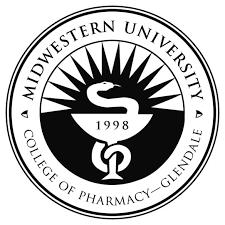
Follow us on Twitter: @MWUpharmacy
Follow us on Instagram: @MWUpharmacy
EDITORIAL UNIVERSITY & ALUMNI 23
Creighton University College of Pharmacy
 Jane Stein, PharmD Professor, Creighton University College of Pharmacy
Jane Stein, PharmD Professor, Creighton University College of Pharmacy

Service-learning guides Phoenix pharmacy students
The pharmacy program at Creighton University’s Phoenix campus welcomed its third class this year, which continues the University’s commitment to satisfying a growing need for pharmacists in Arizona and beyond

The arrival of the new students marked a highlight in a year that saw current students continue a tradition of service locally and abroad and saw all faculty members present continuing education sessions at the 2023 Arizona Pharmacy Association’s Annual Convention.
America’s evolving healthcare challenges demand a vigorous response, and the Creighton University School of Pharmacy and Health Professions provides that response by producing a well-prepared workforce to serve the state’s healthcare needs
Creighton University has been educating passionate, capable pharmacists in the Jesuit, Catholic tradition since 1905. It brought that tradition to Phoenix in 2021 when the new $100 million, 195,000-square-foot Creighton University Health Sciences Campus opened at 3100 N Central Ave., in midtown Phoenix.
much more than extracurricular activities They are essential facets of a Creighton pharmacy education.
“Through service, they bridge the gap between theory and practice,” says Yousef Toma, PharmD, BCPS, CSP, AAHIVP, assistant professor at the Creighton School of Pharmacy and Health Professions. “They apply their pharmaceutical knowledge to improve the lives of vulnerable populations This hands-on experience enriches their education by demonstrating the realworld impact of their chosen �eld.”
Creighton’s faculty and pharmacy students in Phoenix eagerly anticipate continuing their service work at St. Vincent de Paul Clinic and First Place, where housing is provided to adults with autism These commitments are
Creighton in the Global Community
That approach to service expresses itself internationally in Creighton’s pharmacy program This year, two pharmacy students and Jane Stein, PharmD, assistant professor of pharmacy practice, embarked on an international experience in the Dominican Republic
There, together with Creighton’s service partner of 50 years, the Institute for Latin American Concern, the students witnessed healthcare disparities �rsthand and actively contributed to addressing them
“Such international experiences broaden their horizons and fosters cultural competence, preparing them to be socially responsible global citizens,” says Toma

Creighton in the Pharmacy Community
Additionally, all three of the Phoenix faculty members presented continuing education sessions at the 2023 Arizona Pharmacy Association’s Annual Convention
Creighton in the Phoenix Community
EDITORIAL UNIVERSITY & ALUMNI
24
Yousef Toma, PharmD, BCPS, CSP, AAHIVP
held June 22-25 in Tucson. Their participation underscores the program's dedication to fostering professional growth and staying at the forefront of pharmaceutical education and practice in the state
Notably, Toma received the prestigious Distinguished Young Pharmacist Award from the Arizona Pharmacy Association, a well-deserved recognition of his exceptional contributions to the �eld.
Creighton has had a healthcare presence in Phoenix since 2007 When the University’s regional partners asked Creighton to expand and help meet the growing need for compassionate healthcare professionals, the University answered the call by forming the Creighton University Arizona Health Education Alliance, which includes Dignity Health St. Joseph’s Hospital and Medical Center, Valleywise Health and District Medical Group, Inc. The alliance enables Creighton students to gain hands-on experience in these prominent Phoenix healthcare facilities

Creighton was the �rst university in the United States to o�er an online Doctor of Pharmacy program, and since the program launched in 2001, the University has remained on the leading edge of distance education.
One of three pathway options to a Creighton Doctor of Pharmacy credential, the Phoenix PharmD program is a hybrid of online and in-person education
Pharmacy students in Phoenix use Creighton’s innovative distance learning technology to view lectures online at times that work best for them and attend the Phoenix campus for the hands-on portion of the curriculum throughout the academic year.

EDITORIAL UNIVERSITY
& ALUMNI
25
LEARN MORE!
NEW ON-DEMAND PROGRAM!
Pharmacist-Directed
Hormonal Contraception Training

The Arizona Pharmacy Association is happy to announce that 2 years after the passage of SB1082 Arizona pharmacists can now dispense Self-Administered Hormonal Contraceptives to women 18 years and older pursuant to the newly adopted ADHS Statewide Standing Order!
Any pharmacist wishing to dispense self-administered hormonal contraceptives pursuant to this statewide Standing Order must be prepared to do the following:
Complete a 3-hour Training -AzPA has created one that is compliant with ARS 32-1979.01 and AAC R4-23-407 and R4-23-408-409.
Obtain necessary equipment to measure blood pressure. Review the Standing Order, Standard Procedures, and Self-Screening Questionnaire. Establish SOP’s to ensure your pharmacy is compliant with all state laws.
REGISTER NOW 26
Auditors Crack Down on Pharmacies That Bypass Plan Limits
®
PAAS National analysts want to warn pharmacies about an uptick in PBMs �agging prescriptions for bypassing plan limit rejects. These prescriptions are being marked as discrepant and face full recoupment Share this information with your sta� and ensure that claims are not unintentionally being put at risk for audit/recoupment
When pharmacies receive a reject of plan limit or exceeds maximum daily dose, pharmacy sta� must follow the plan guidelines to submit the claim appropriately The plan sending this rejection is telling the pharmacy that the dosage is not covered without additional requirements. This could mean prior authorization, switching to a di�erent dose, or changing to another medication
Pharmacies that manipulate the days’ supply to bypass the rejection are putting those claims at risk of recoupment. PBMs can easily track when pharmacies run a claim, receive a reject, and immediately rebill for the same quantity but di�erent days’ supply. This raises a red �ag that the plan reject was likely not adhered to appropriately – low hanging fruit for PBM auditors.
Reducing the quantity and/or split billing prescriptions can also be an audit risk. If a reduced quantity is submitted to bypass the plan limit (e g , to get under a dollar threshold), the claim is still in jeopardy of being recouped. Beyond circumventing a plan limit, the payor
may argue it increased costs through additional re�lls, dispensing fees, and patient copays One patient complaint to their plan could lead to big trouble for network pharmacies
PAAS Tips:
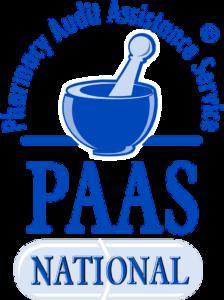
•
Always bill the accurate days’ supply based on the instructions for use indicated on the prescription
• Make sure all sta� are instructed to follow plan rejects appropriately and not change the days’ supply to get a paid claim
• Check with the PBM help desk for guidance on rejects that are vague or unclear

• Do not split bill rejected claims
• Charging the patient cash often leads to complaints [from the patient to an employer or PBM] and can be considered non-compliance with the provider manual and lead to remediation, including potential network termination
◦
◦
If you have exhausted all plan options and the patient insists on paying cash for the full prescription, be sure that you document authorization from the patient that they desired to pay the full cost and did not want to wait for the proper channels
If having di�culties with prescribers following through on prior authorization, enlist the patient to help. The patient could contact the prescriber and/or �le a complaint with their insurance which may speed up the process.
EDITORIAL PAAS NATIONAL
27
CONT. PAAS NATIONAL
PAAS National® is committed to serving community pharmacies and helping keep hard-earned money where it belongs Contact PAAS today at (608) 873-1342 or info@paasnational.com to see why PAAS Audit Assistance membership might be right for you.

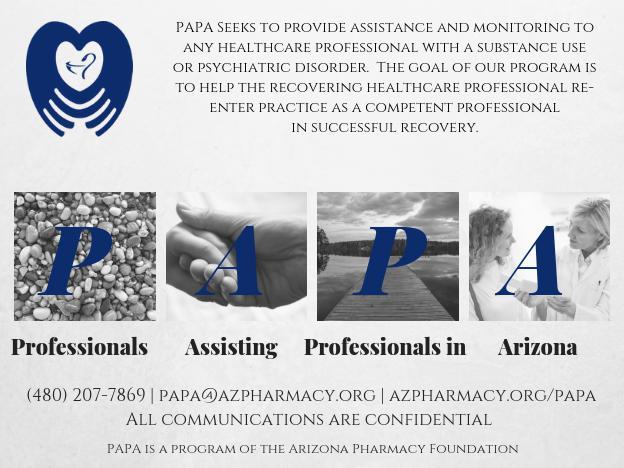
®
By Trenton Thiede, PharmD, MBA, President at PAAS National , expert third party audit Assistance and FWA/HIPAA compliance
Copyright © 2023 PAAS National, LLC. Unauthorized use or distribution prohibited. All use subject to terms at https://paasnational.com/terms-of-use/.
28
Join the Legislative Committee!
We meet on the 3rd Thursdays of the month at 7:00 a.m.
Legislative Update
Pharmacist Directed Hormonal Contraceptives
(E�ective July 5, 2023)
The Arizona Pharmacy Association is happy to announce that 2 years after the passage of SB1082 Arizona pharmacists can now dispense Self-Administered Hormonal Contraceptives to women 18 years and older pursuant to the newly adopted ADHS Statewide Standing Order that went into e�ect on July 5, 2023!

Any pharmacist wishing to dispense selfadministered hormonal contraceptives pursuant to this statewide Standing Order must be prepared to do the following:
1. Complete a 3-hour Training -AzPA has created one that is compliant with ARS 32-1979.01 and AAC R4-23-407 and R4-23-408-409. This ondemand training will be available on July 7th at 5pm. Training link:
https://www.lecturepanda.com/a/PharmacistDir ectedHC
2 Obtain necessary equipment to measure blood pressure and calculate BMI
3 Review and comply with the Standing Order, Standard Procedures, and Self-Screening Questionnaire
https://www.azdhs.gov/prevention/womenschildrens-health/womenshealth/index.php#family-planning
4. Establish SOP’s to ensure your pharmacy is compliant with all state laws.
ADVOCACY
LEGISATIVE UPDATE
Technician Immunization Administration
(E�ective September 6, 2023)
The Arizona Pharmacy has been working with the Board of Pharmacy rules writing task force for the past 2 years on a rule package to allow technicians to administer vaccines under a pharmacist supervision and those �nally went into e�ect on September 6, 2023
According to AAC R4-23-1104 (B5) technicians can administer a vaccine when:
•
Administration of the vaccine is done under an order that complies with ARS 32-1974 and R423-411;
• Administration of the vaccine is delegated by and done under the supervision of a pharmacist on duty who is certi�ed under ARS 32-1974 to administer vaccines; and
• There is documentation by the permittee that the pharmacy technician has completed the following:
•
• Current certi�cation in basic CPR
A practical training program that is approved by ACPE and includes hands-on-injection and recognition and treatment of emergency reactions to vaccines; and
NOTE: If you work within a community pharmacy chain or health system you should defer to your supervisor for details on planned rollout and applicable SOP’s.
ApplyHere
29
BOARD OF
Arizona State Board of Pharmacy Update

BOARD MEMBERS
ONLINE RENEWAL CYCLE
The online renewal cycle will begin on September 5, 2023, at 00:01 MST and end on November 1, 2023, at 23:59 MST. Renewals submitted after November 1, 2023, are subject to a late renewal penalty. You may renew by logging into your online pro�le here.
Please Note: A person shall not apply for a license renewal more than sixty days before the expiration date of the license
CE REQUIREMENTS FOR 2023 RENEWAL PHARMACISTS
30 total continuing education (“CE”) hours are required for renewal:
Opioid-related, substance use disorder-related, or addiction related continuing education activities
Immunizers: CE related to administering Immunizations, vaccines, and emergency medications
Pharmacists who prescribe and dispense tobacco cessation drug therapies: CE related to tobacco cessation
Three (3) of the thirty (30) CE hours required for renewal A.R.S. 32-3248.02
Two (2) of the thirty (30) CE hours required for renewal.
A A C R4-23-204(A)(2)(a)
Two (2) of the thirty (30) CE hours required for renewal.
A.R.S. 32-1979.03(B)
Pharmacists who dispense self administered hormonal contraceptives under a standing prescription order: CE related to selfadministered hormonal contraceptives
At least three (3) of the thirty (30) CE hours required for renewal
A R S 32-1979 01 R4-23-204 R4-23-407.2
EDITORIAL L o r r i W a l m s l e y R P h , P r e s i d e n t T e n i l l e D a v i s , P h a r m D , V i c e P r e s i d e n t C e d a r L a h a n n , P h a r m D , R P h , M e m b e r K e v i n D a n g , P h a r m D , R P h , M e m b e r K r i s t e n S n a i r , C P h T , M e m b e r F r a n k T h o r w a l d , M e m b e r ( P u b l i c ) V a c a n t , M e m b e r V a c a n t , M e m b e r V a c a n t , M e m b e r ( P u b l i c )
NEWS
PHARMACY
DESCRIPTION NUMBER STATUTE/RULE
30
PHARMACY TECHNICIANS
20 total CE hours are required for renewal:
Opioid-related, substance use disorder-related, or addiction related continuing education activities
Three (3) of the twenty (20) CE hours required for renewal
*Remote Dispensing Pharmacy Technicians: CE in remote dispensing site pharmacy practices.
Two (2) hours - these hours are in addition to the twenty (20) total CE hours required for renewal This does not apply to pharmacy technicians who work from home.
Veri�cation Technician: CE in patient safety
Four (4) of the twenty (20) CE hours required for renewal
*Note: Remote Dispensing Pharmacy is also known as “Telepharmacy”.
A remote dispensing pharmacy technician is a pharmacy technician who works in a remote pharmacy in accordance with A.R.S. 32- 1961.01. A remote pharmacy is supervised by a pharmacist remotely while the pharmacy technician works independently at the remote pharmacy. A remote pharmacy is physically sta�ed by pharmacy technicians while the pharmacist supervises remotely from another location. This does not apply to pharmacy technicians who work from home.
UPCOMING MEETINGS
MEETING
DATE
Complaint Review October 10, 2023
Board Meeting October 18-19, 2023
Complaint Review November 28, 2023
Board Meeting December 6-7, 2023
Mailing Address: P.O. Box 18520 Phoenix, AZ 85005
Physical Address: 1110 W. Washington St., Suite 260 Phoenix, AZ 85007
NEWS
PHARMACY
BOARD OF
DESCRIPTION NUMBER STATUTE/RULE
A R S 32-3248 02
A R S 32-1923
01(C)(1)
A A C R4-23-1104
01(D)(4)
31
Arizona State Board of Pharmacy Sides with AzPA & Independent Pharmacy Coalition
Rescinds June 2023 Vote on the Enforcement of November 1, 2023, Compendial Publication of USP General Chapters ‹795›, ‹797›, and ‹800›. Assigns Task Force to Evaluate

Phoenix, AZ “If 90 percent of the compounding pharmacies decide not to compound anymore, close their doors, Arizona citizens will su�er,” said Boesen & Snow Partner and Co-founder Mark Boesen while speaking before the Arizona State Board of Pharmacy on August 16, 2023, about the rami�cations of the Board adopting future United States Pharmacopeia General Chapters ‹795›, ‹797›, and ‹800› Representing the Arizona Pharmacy Association and the Arizona Independent Pharmacy Coalition, he explained these compounded medications are drugs of last resort for patients who use them. By motion after hearing from Mr. Boesen as well as Boesen & Snow Senior Attorney Michael Raine, the Board voted to rescind its prior order to adopt and enforce the chapters on November 1, 2023, and will now have its task force further evaluate the issue
Mr. Boesen explained to the Board that when the USP publishes Chapters ‹795›, ‹797›, and ‹800› on November 1, 2023, it is not obligated to adopt the chapters. Mr. Boesen told the Board that it is not “hamstrung by Arizona or Federal law.”
Boesen & Snow Senior Attorney Michael Raine explained to the Board that state law does not allow the Board to incorporate by reference the USP and all its future amendments. Mr. Raine asked that the Board get engaged in discussion with the compounding community
Mr Boesen talked about how other states are addressing USP ‹800› and explained that so far only a minority have adopted it, and that many are presumably not expressing intent to adopt because it is too onerous, and the states are worried about access to compounded medication. He explained that many of the compounding pharmacies in Arizona are small and that it would be di�cult for the pharmacies to comply with these USP chapters.
“I am not here to tell pharmacies that they ought not to do it, but I am here to say that there may be pharmacies that are engaged in low-risk activities that this board would be comfortable considering a di�erent level of care,” Mr Boesen explained
Mr Boesen emphasized that a one size �ts all policy does not work, “why do we have to treat all of the drugs exactly the same” and that it should instead be based on the risk of the physical properties of the drug, level of danger, risk with exposure, as well as batch size. He said that there is a lack of science behind the USP process quoting industry expert Loyd Allen who stated, “My view of the revised Chapters 795 and 797 is that they are generally not scienti�cally supported by any evidence, but rather by opinions and what some individuals think ‘should be done.’” (Letter from L. Allen to USP Appeals Panel, Jan 21, 2020)
EDITORIAL
BOARD OF PHARMACY
32

33




































 Jane Stein, PharmD Professor, Creighton University College of Pharmacy
Jane Stein, PharmD Professor, Creighton University College of Pharmacy












